On January 24, 2024, a research team led by Professor ZHU Maoyan from the Nanjing Institute of Geology and Palaeontology, Chinese Academy of Sciences (NGIPAS), published their latest research finding of ~1.63-billion-year-old multicellular fossils from North China, on the prestigious journal Science Advances.
These exquisitely preserved microfossils were considered as currently the oldest record of multicellular eukaryotes. The study is another breakthrough after their finding of decimeter-sized eukaryotic fossils in the Yanshan area, North China, and extends back the emergence of multicellularity in eukaryotes by about 70 million years.
All complex life on Earth, including diverse animals, land plants, macroscopic fungi and seaweeds, are multicellular eukaryotes. Therefore, multicellularity is key for eukaryotes to acquire organismal complexity and large size, and often regarded as one major transition in Earth’s life history by scientists. However, it is still poorly understood when eukaryotes first evolved this innovation in their deep evolutionary history.
Fossil records with convincing evidence show that eukaryotes with simple multicellularity already appeared at 1.05 billion years ago, including red and green algae, and putative fungi. Older records claimed to be multicellular eukaryotes, but most of them are controversial due to their simple morphology and lack of cellular structure.
“The newly discovered multicellular fossils are from the late Paleoproterozoic Chuanlinggou Formation of ~1635 million year old. They are unbranched uniseriate filaments made up of two to more twenty large cylindrical or barrel-shaped cells, with diameter of 20-194 μm, and incomplete length up to 860 μm. These filaments show a certain degree of complexity based on their morphological variation”, says MIAO Lanyun from theresearch team.
Filaments can be constant or tapering throughout the entire length, or only tapering at one end. Morphometric analyses demonstrate their morphological continuity which suggest they should represent a single biological species, instead of discrete species. They are named as Qingshania magnifica, 1989, a form taxon with similar morphology and size, and also described from the Chuanlinggou Formation.
One particularly important feature of Qingshania, is the round intracellular structure (diameter 15-20 μm) in some cells. These structure are comparable to asexual spores known in many eukaryotic algae, indicating Qingshanialikely reproduced by spores.
In modern life, uniseriate filaments widely occur in both prokaryotes (bacteria and archaea) and eukaryotes. The combination of large cell size, large range of filament diameter, morphological variation and intracellular spores, demonstrate the eukaryotic affinity of Qingshania, as no known prokaryotes can be such complex. Filamentous prokaryotes are commonly very small, about 1-3 μm in diameter, and distribute in more than 147 genera of 12 phyla. Some cyanobacteria and sulfur bacteria may reach large size up to 200 μm thick, but these large prokaryotes are very simple in morphology with disc-shaped cells and do not reproduce via spores.
The best modern analogues are some green algae, although filaments also occur in other groups of eukaryotic algae (red algae, brown algae, yellow algae, charophytes, etc.), as well as fungi and oomycetes. MIAO add, “this indicates Qingshania was most likely photosynthetic algae, probably belonging to extinct stem group of Archaeplastids (a major group consisting of red algae, green algae and land plants, as well as Glaucophytes), although its exact affinity is still unclear.”
In addition, they have conducted Raman spectroscopic investigation to test the eukaryotic affinity of Qingshania, from the perspective of chemical composition, and used 3 cyanobacterial taxa as comparison. Raman spectra revealed 2 broad peaks characteristic of disordered carbonaceous matter, and the estimated burial temperatures using Raman parameters range from 205 to 250 °C, indicating low degree of metamorphism. Principal component of analysis (PCA) of Raman spectra sorted Qingshania and cyanobacterial taxa into two distinct clusters , indicating Qingshania has different organic matter from those of cyanobacterial fossils, further supporting the eukaryotic affinity of Qingshania.
At present, the oldest unambiguous eukaryotic fossils are unicellular forms from late Paleoproterozoic sediments (~1.65 billion years ago) in North China and Northern Australia. Qingshania appeared only slightly later than them, indicating eukaryotes acquired simple multicellularity very early in their evolutionary history.
As eukaryotic algae (Archaeplastids) originated after the last eukaryotic common ancestor (LECA), the discovery of Qingshania further supports the early appearance of LECA in late Paleoproterozoic (which is consistent with many molecular clock studies), rather than at late Mesoproterozoic of about 1 billion years ago, if Qingshaniawas truly algal in nature.
Professor Andrew Knoll from Harvard University and Professor QU Yuangaofrom the Institute of Deep-sea Science and Engineering, CAS, joint the study. This study was jointly funded by the National Key Research and Development Program of China, the National Natural Science Foundation of China and the Innovation Cross-Team of the CAS.
References:Miao, L., Yin, Z., Knoll, A.H., Qu, Y., Zhu, M.*, 2024. 1.63-billion-year-old multicellular eukaryotes from the Chuanlinggou Formation in North China. Science Advances.
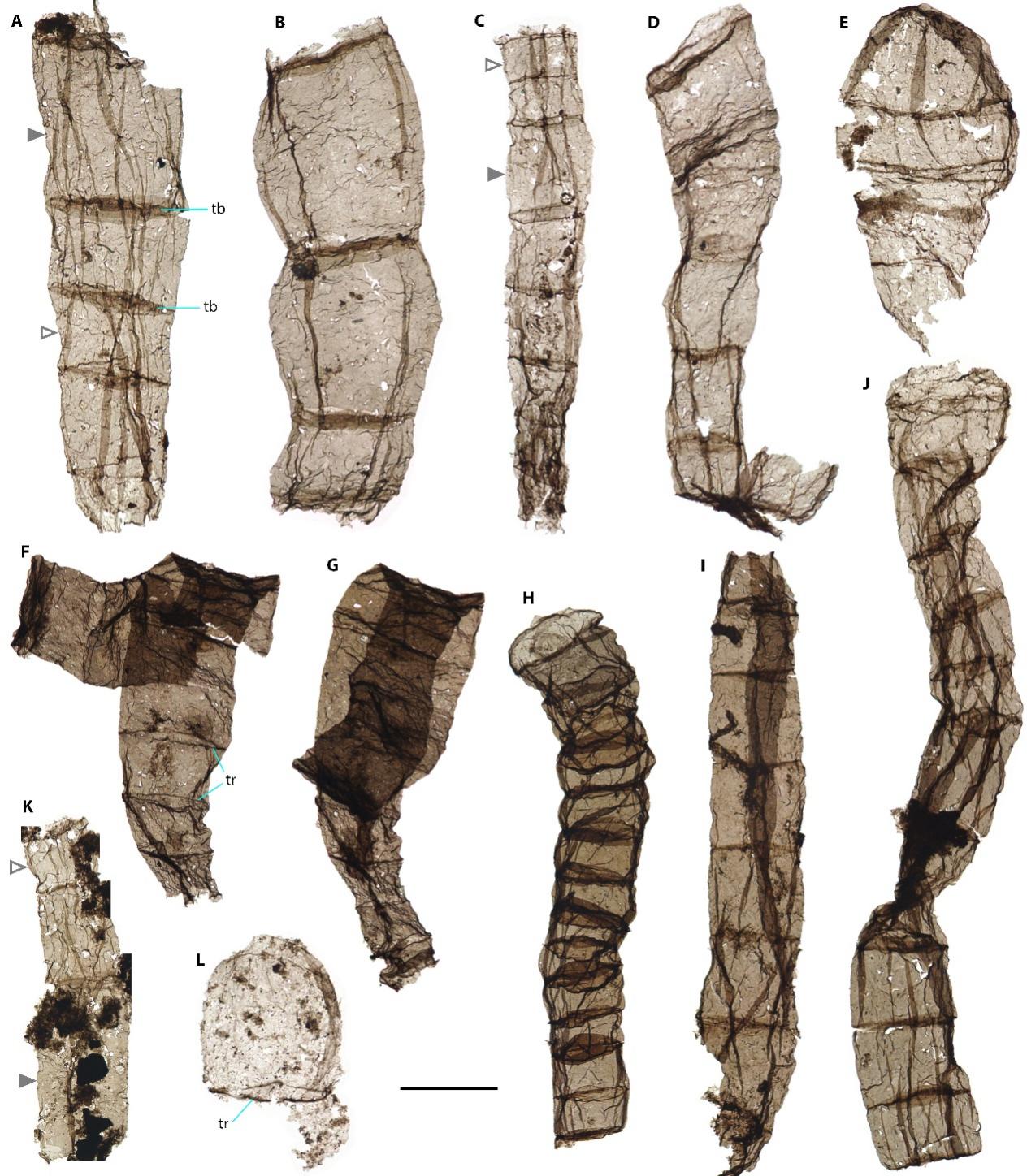
Multicellular fossil Qingshania from the Chuanlinggou Formation. Scale bar equals 100 μm for F-H and K, and 50 μm for the rest (Miao et al., 2024b).

Multicellular fossil Qingshania with a round intracellular structure interpreted to be spore. Scale bar equals 50 μm for A, C, D and F (Miao et al., 2024b).
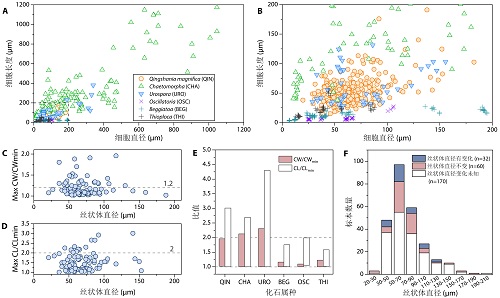
Morphometric analyses of Qingshania (A-D), filament size frequency distribution (F), and comparison with modern large eukaryotic and prokaryotic filaments (A, B, E). Chaetomorpha and Urospora are green algae; Oscillatoriais a cyanobacterium; Beggiatoa and Thioploca are sulfur bacteria (Miao et al., 2024b).
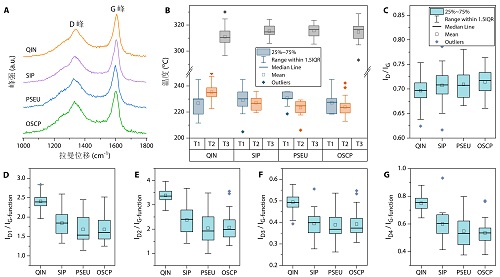
Raman analyses of Qingshania and 3 cyanobacterial taxa (Miao et al., 2024b).
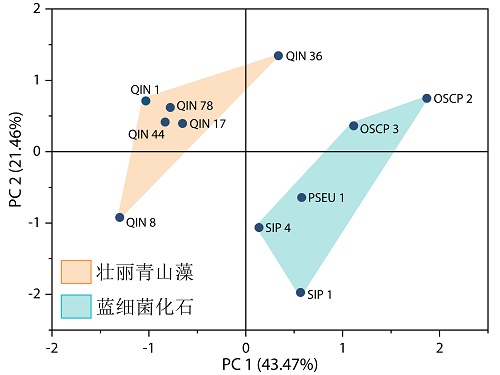
Principal component analysis (PCA) of Raman spectra of Qingshania and 3 cyanobacterial taxa (Miao et al., 2024b).
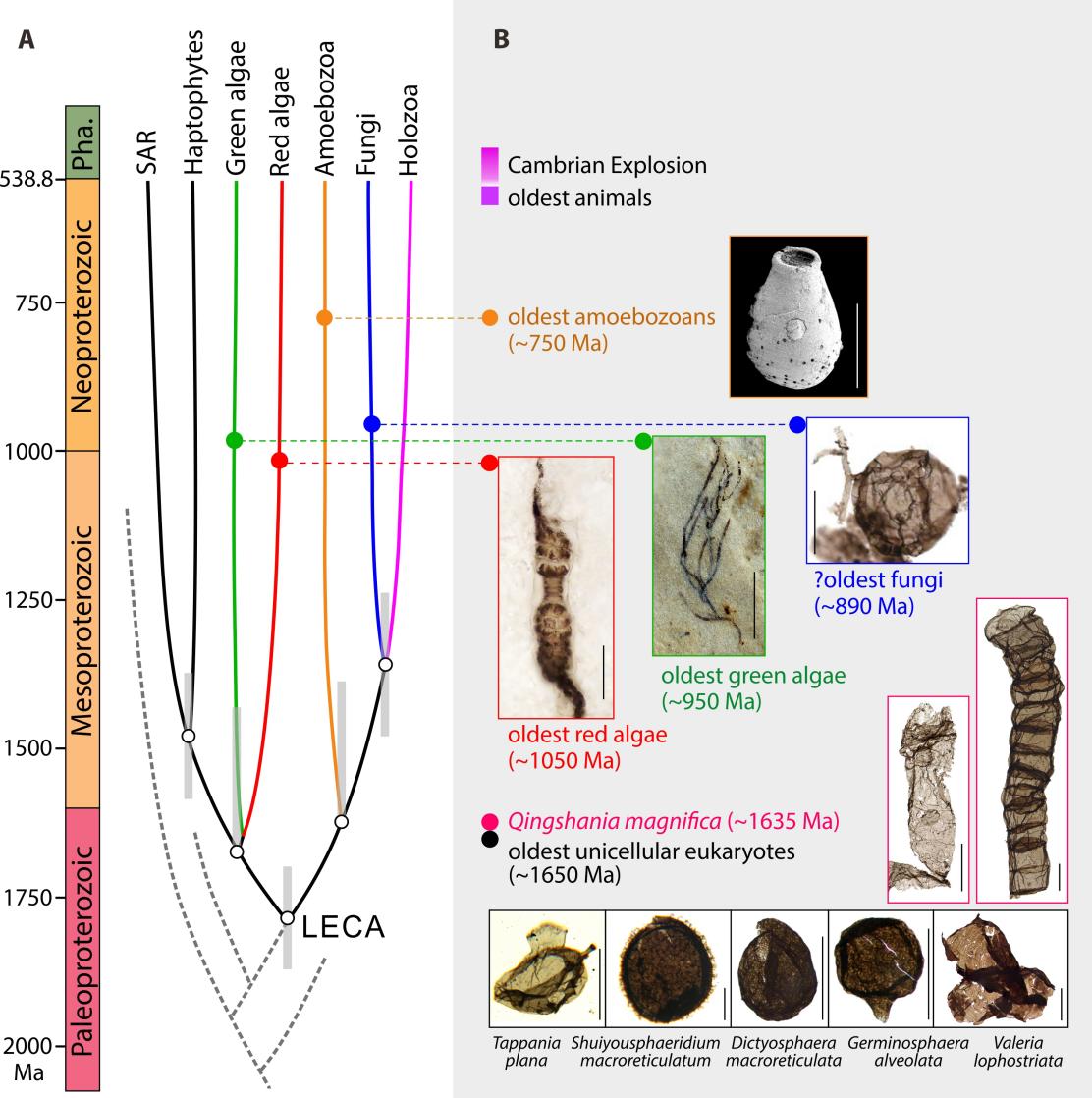
Simplified eukaryotic tree (A) and representative early eukaryotic fossils (B). In eukaryotic tree, grey dash lines represent stem group eukaryotes. Solid lines denote crown group eukaryotes (LECA plus its descendants). Grey bars at nodes display the estimated age range of divergence of major branches from a molecular clock study (Parfrey et al., 2011, PNAS). Scale bar in the green algal fossil equals 500 μm; the rest are 50 μm (Miao et al., 2024b).
Contact:
LIU Yun, Propagandist
Email:yunliu@nigpas.ac.cn
Nanjing Institute of Geology and Palaeontology, Chinese Academy of Sciences
Nanjing, Jiangsu 210008, China
Download:
